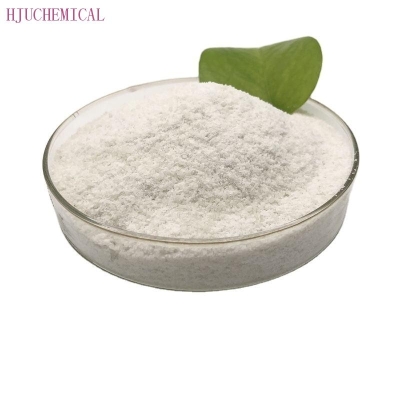-
Categories
-
Pharmaceutical Intermediates
-
Active Pharmaceutical Ingredients
-
Food Additives
- Industrial Coatings
- Agrochemicals
- Dyes and Pigments
- Surfactant
- Flavors and Fragrances
- Chemical Reagents
- Catalyst and Auxiliary
- Natural Products
- Inorganic Chemistry
-
Organic Chemistry
-
Biochemical Engineering
- Analytical Chemistry
- Cosmetic Ingredient
-
Pharmaceutical Intermediates
Promotion
ECHEMI Mall
Wholesale
Weekly Price
Exhibition
News
-
Trade Service
Recently, the team of Researcher Li Ning and Academician Zhang Tao from the Catalysis and New Materials Laboratory of Dalian Institute of Chemical Physics, Chinese Academy of Sciences successfully realized the direct hydrodeoxygenation of cellulose-based 3-methyl-2-cyclopentenone (MCP) to methyl cyclopentadiene This work has opened up a new path for the direct conversion of unsaturated ketones to conjugated dienes
.
MCPD is the raw material for the production of rocket fuel RJ-4.
It is also used in the production of various products, such as pharmaceutical products, gasoline antiknock agents, epoxy resin curing agents and dye additives
.
At present, MCPD is mainly produced from the by-products of petroleum cracking tar, with low yield (about 0.
7 kg/ton) and high price (about 70,000 yuan/ton), which greatly limits its application
.
Therefore, it is of great significance to explore renewable biomass synthesis routes
.
Based on the previous work, the team developed a new strategy for converting cellulose to MCPD, first converting cellulose to MCP (Joule, 2019), and then selectively hydrodeoxygenating directly on a zinc-molybdenum oxide catalyst.
Generate MCPD
.
The experimental results show that in the gas phase hydrodeoxygenation process of MCP, the partially reduced zinc-molybdenum oxide catalyst preferentially interacts with the carbon-oxygen double bond in the presence of the carbon-carbon double bond, and forms diene products with high selectivity.
MCPD (70% carbon yield)
.
Compared with the two-step process of preparing MCPD from MCP by selective hydrogenation and then dehydration reported by scholars at home and abroad recently, the direct hydrodeoxygenation technology has the advantages of simple process, few operation steps, and low energy consumption
.
The above research results were published in "Nature Communication" (Nature Communication)
.
This work was funded by the National Natural Science Foundation of China, the Innovation Research Fund of our Institute, and the Cooperation Fund of the Institute of Clean Energy Innovation of the Chinese Academy of Sciences
.
(Text/Picture Wang Ran, Liu Yanting) Source of this article: Dalian Institute of Chemical Physics, Chinese Academy of Sciences, for reference only
.
MCPD is the raw material for the production of rocket fuel RJ-4.
It is also used in the production of various products, such as pharmaceutical products, gasoline antiknock agents, epoxy resin curing agents and dye additives
.
At present, MCPD is mainly produced from the by-products of petroleum cracking tar, with low yield (about 0.
7 kg/ton) and high price (about 70,000 yuan/ton), which greatly limits its application
.
Therefore, it is of great significance to explore renewable biomass synthesis routes
.
Based on the previous work, the team developed a new strategy for converting cellulose to MCPD, first converting cellulose to MCP (Joule, 2019), and then selectively hydrodeoxygenating directly on a zinc-molybdenum oxide catalyst.
Generate MCPD
.
The experimental results show that in the gas phase hydrodeoxygenation process of MCP, the partially reduced zinc-molybdenum oxide catalyst preferentially interacts with the carbon-oxygen double bond in the presence of the carbon-carbon double bond, and forms diene products with high selectivity.
MCPD (70% carbon yield)
.
Compared with the two-step process of preparing MCPD from MCP by selective hydrogenation and then dehydration reported by scholars at home and abroad recently, the direct hydrodeoxygenation technology has the advantages of simple process, few operation steps, and low energy consumption
.
The above research results were published in "Nature Communication" (Nature Communication)
.
This work was funded by the National Natural Science Foundation of China, the Innovation Research Fund of our Institute, and the Cooperation Fund of the Institute of Clean Energy Innovation of the Chinese Academy of Sciences
.
(Text/Picture Wang Ran, Liu Yanting) Source of this article: Dalian Institute of Chemical Physics, Chinese Academy of Sciences, for reference only







